Spasticity in multiple sclerosis
introduction
Spasticity is an unwanted tension of the muscles beyond the normal level.In addition to the increased muscle tension, muscle twitching, muscle spasms and muscle rigidity also occur. Spasticity can recur in phases or persist continuously. They often occur in multiple sclerosis and are not infrequently combined with muscle weakness.
The spasticity can cause pain and limit physical mobility. The extent of the spasticity is different for each multiple sclerosis patient. Some are severely affected in their everyday life by the spasticity, while others have only slight restrictions. Unfortunately, spasticity is one of the most common causes of disability in MS.

Why can spasticity occur in multiple sclerosis?
In MS, foci of inflammation repeatedly arise in the central nervous system, i.e. in the brain and spinal cord. These cause the connections between the nerve cells to perish. In the real sense, the inflammation turns against the isolation of the nerve cell connections, the myelin. This can be imagined like a cable. Due to the destruction of the insulation, the transmission between the nerve cells can no longer take place.
So-called motor neurons are responsible for the movements of the muscles. There are always two motor neurons connected to one another. One sits in the brain, while the second sits in the spinal cord and moves a specific muscle or muscle group. When the connection between the first and second motor neurons is disturbed, e.g. In the course of inflammation in multiple sclerosis, the second motor neuron is no longer inhibited by the first. This leads to increased tension in the muscles. Spasticity develops.
For more detailed information, please also read: The myelin sheath
On which muscles do the spasticity occur in particular?
In principle, all muscle groups can be affected by spasticity if the focus of inflammation is in the appropriate location. Therefore, an individual picture of the affected muscle groups is created. More often, however, spasms occur in the leg muscles. This is the case, among other things, because the nerve connections are particularly long here. The spasms occur there frequently and are in some cases the first symptom of multiple sclerosis.
The arms are usually affected as the disease progresses. However, they are often not as badly affected by the spasms and muscle weaknesses. Spasticity in the trunk or neck muscles is less common. As a rule, one half of the body is more affected by the spasticity than the other. But here too there are strong individual differences.
For more information, see: Multiple sclerosis
The following additional symptoms may occur
The mobility of the affected muscles is restricted by the spasticity. In some patients, the spasticity only occurs after prolonged exposure. Many are restricted in their ability to walk. The spasticity is usually accompanied by muscle weakness. Furthermore, a painful feeling of tension or cramps in the muscles can occur. Muscle and tendon shortening can occur over a longer period of time, which limits the mobility of the arms and legs. Furthermore, signs of wear and tear can develop on the joints over the years, as the spasticity leads to incorrect stress on the joints.
The spasticity itself as well as the consequences that arise over the years, such as joint damage, can lead to severe pain. In addition, a so-called spastic bladder can occur. Here, foci of inflammation are located in the spinal cord in such a way that they affect the pathways of voluntary bladder control. This can lead to a strong and urgent need to urinate even if the bladder is not filled enough. This can seriously affect the quality of life. Difficulty having sexual intercourse is also possible. Ultimately, spasticity is often accompanied by rapid fatigue. One speaks here of fatigue.
Read more at: Multiple sclerosis
Treatment of spasticity
An indispensable main pillar of treatment is physiotherapy and physiotherapy. There are a number of exercises that are used against spasticity and can then be completed independently at home. Among other things, passive extension of the arms and legs is important to maintain mobility and prevent muscle and tendon shortening. At the same time, this relaxes the muscles and promotes blood circulation. In addition, postures can be trained that reduce muscle tension. Muscle mobilization techniques and cold therapies can also be used for this purpose. In addition to therapy, movement exercises in the water or massages are also useful. In addition, occupational therapists can help those affected to organize their everyday lives as independently as possible despite their limitations. An orthosis, e.g. a knee brace to make everyday life easier. Alternative healing methods can be used in addition, e.g. Acupuncture or relaxation exercises. However, their effectiveness has not yet been scientifically proven. In rare, very severe cases, surgery is indicated to correct misalignments, lengthen tendons or secure joints.
Read more about: Physiotherapy and physiotherapy
These drugs are used
If exercise therapy is not enough to relieve the symptoms, medication is used. Muscle relaxants and anti-epileptic drugs are used for spasticity. These are supposed to relax the muscles. Baclofen or tizanidine is often used in tablet form. In severe cases, muscle relaxants can be given directly into the spinal cord through a tube. Another possibility are neurotoxins, i.e. nerve toxins. These are injected directly into the muscle via a syringe and work there for about 2 months. In severe cases, cannabinoids are now also allowed to treat spasticity.
Read more about this at: Multiple sclerosis therapy
You can do that yourself
It is important that the exercises from physiotherapy are also performed regularly at home. If you have mild spasticity, you should be in good physical condition yourself. Stretching and strengthening exercises that you can complete independently help here. It is advisable to discuss the exercises with your physiotherapist so that they can be implemented correctly and purposefully. It is also helpful to actively pay attention to which exercises or therapies are best for you individually. Body awareness training can help here. An exchange with other sufferers can also be helpful and bring new approaches to alleviate symptoms. In addition, if symptoms worsen, a doctor should always be consulted promptly in order to avert possible late effects.
Such is the prognosis
Unfortunately, multiple sclerosis is still not curable and has been progressing continuously over the years. Many people with MS are dependent on a wheelchair after many years of illness. However, today's therapies can weaken the intensity of the course of MS. The quality of life of those affected has increased noticeably in recent years. There are also more drugs available to fight inflammation in the central nervous system. Therefore, the forecast has improved significantly in recent years. However, the course of the disease varies greatly from person to person.
Further information on this topic can be found at: Course of Multiple Sclerosis




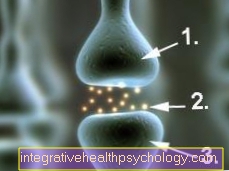







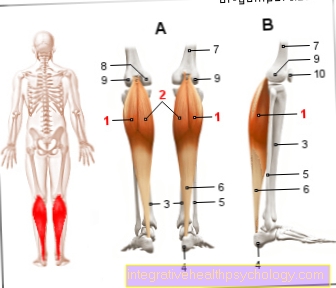





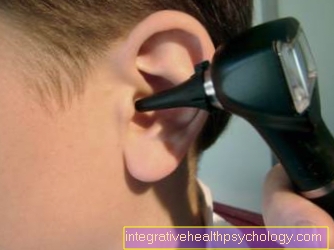


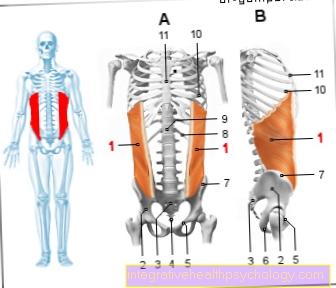




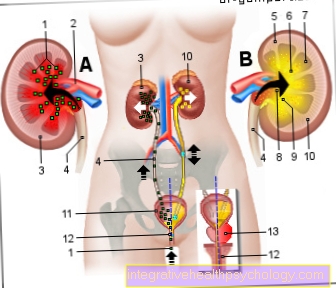


.jpg)